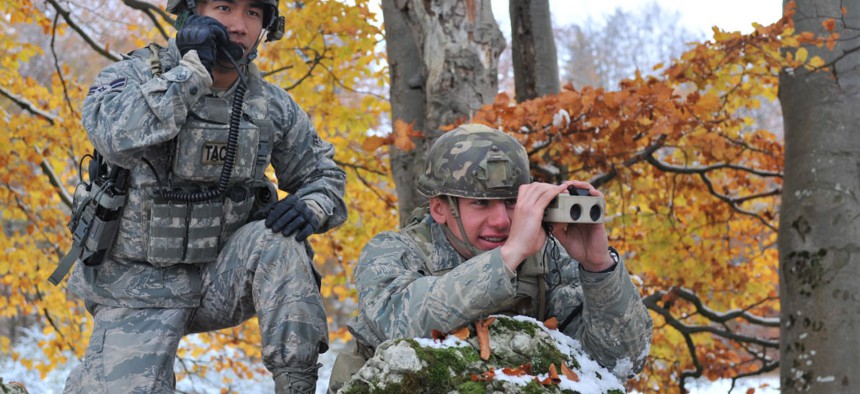ARL, UK collaboration: Distributed analytics will aid coalition forces
An alliance that also includes industry and academia embarks on a research project to ensure secure, dynamic coalition communications through Distributed Analytics and Information Science, or DAIS.
The U.S. military has cooperated with allied partners in a variety of technology areas, from cybersecurity to international agreements on sharing information about orbiting satellites and space junk, to the recent inaugural Unmanned Warrior exercise.
Researchers from the Army Research Laboratory and U.K. Ministry of Defence, along with academia and industry partners, are forming an alliance to conduct research on another emerging area—ensuring secure communications and analysis in technologically crowded and contested environments.
The focus of the collaborative alliance is Distributed Analytics and Information Science, or DAIS, which is intended to improve the situational understanding of coalition forces through secure, dynamic, semantically aware, distributed analytics, the Army said.
The research addresses a two-pronged problem: managing the amount of information pouring in from U.S. and coalition forces, and ensuring that information is both useful and protected from adversaries whose access to advanced communications, analytics tools and information is steadily growing.
"Research in distributed analytics and information science directly addresses the growing challenges in conducting coalition operations by enabling distributed, dynamic and secure coalition communication--information infrastructures that support ad-hoc coalition teams and utilize distributed analytics to derive shared situational understanding," said Greg Cirincione, U.S. collaborative alliance manager for the DAIS International Technology Alliance.
The alliance expects to exist for five to 10 years and spend between $8 million and $10 million a year on the research. Work will have three components. A Basic Research Component that will focus on fundamental research, with the results remaining in the public domain. Two Technology Research Components—one each for the U.S. and U.K. contingents—will apply work done in the basic research to military, security and commercials applications.
The ultimate goal is information superiority on the battleground, by advancing the state of the art in DAIS through the collaboration of government, industry and academia. "Future coalitions will operate increasingly in complex and dynamic environments, with a broad range of entities and actors,” Cirincione said. “The success of the mission will be improved by the ability to dynamically, rapidly and securely form ad-hoc coalition teams that can share data, information and network infrastructure to enable a common situational understanding."
The academic and industry partners, led by IBM, include the University of California at Los Angeles, University of Massachusetts at Amherst, Pennsylvania State University, Purdue University, Raytheon BBN Technologies, Stanford University, Yale University, Airbus Group, BAE Systems, Cardiff University, Imperial College London, University of Southampton and University College London.




